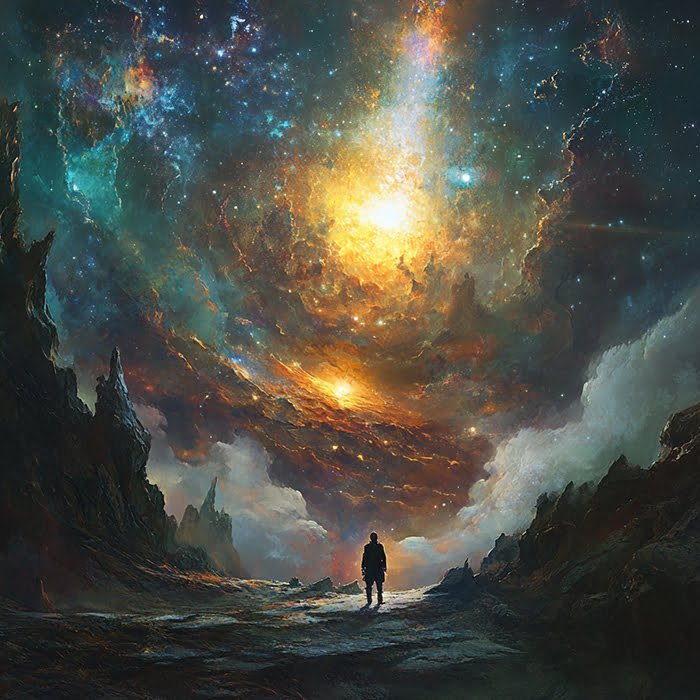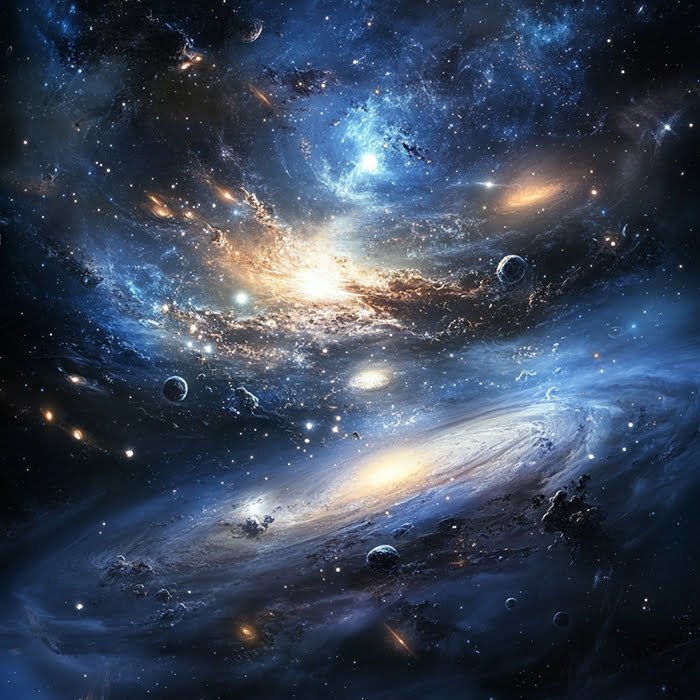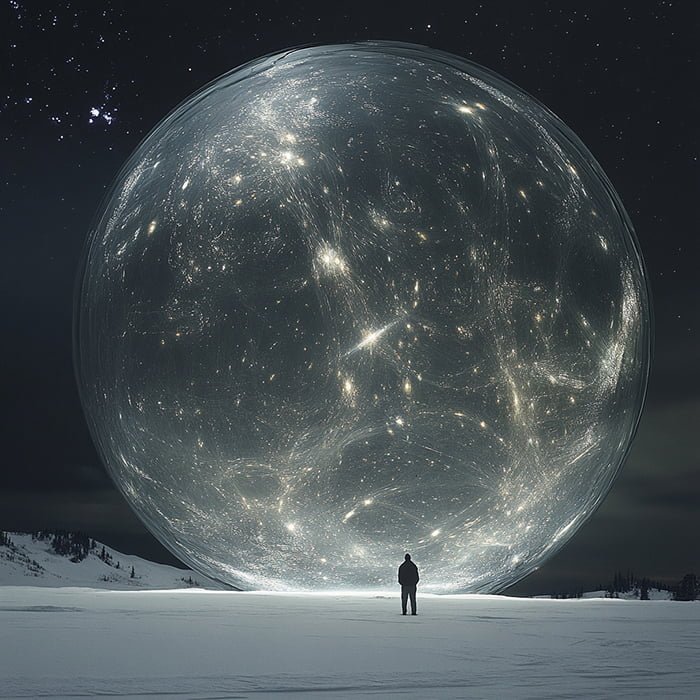The universe is a vast, complex entity of matter, energy, and laws, shaped by the Big Bang, dark matter, and dark energy.
Key Takeaways 📝
- The universe is not just a vast space; it’s a complex interplay of matter, energy, and physical laws that governs everything from quarks to galaxies.
- Did you know that dark energy accounts for approximately 68% of the universe’s composition, driving its accelerated expansion since the Big Bang?
- Contrary to common belief, the observable universe is merely a fraction of what exists, as the entire universe may be infinite and beyond our current reach.
- Understanding the universe’s fundamental components—ordinary matter, dark matter, and dark energy—can lead to insights that impact technological advancements and our understanding of existence.
- Ultimately, the exploration of the universe challenges our perceptions and encourages a deeper appreciation for the interconnectedness of all things in existence.
The universe is a captivating and awe-inspiring realm that has captured the imagination of humanity for millennia. From the smallest subatomic particles to the grandest of celestial bodies, the universe is a tapestry of intricate and interconnected systems that continue to challenge and inspire us. In this comprehensive blog post, we will delve into the fascinating world of the universe, exploring its definition, components, scale, expansion, and composition, as well as the groundbreaking theories that have shaped our understanding of this vast and complex entity.
Defining the Universe
The universe, in its most fundamental sense, is the totality of all existence, encompassing all space, time, matter, energy, and the physical laws that govern them. It is a concept that extends far beyond our immediate perceptions, incorporating everything from the smallest quark to the largest galactic supercluster. The universe is often defined as “the totality of existence,” or everything that exists, has existed, and will exist.
At its core, the universe is composed of various forms of matter and energy, all of which are subject to the physical laws that govern their behavior. These laws, such as conservation laws, classical mechanics, and relativity, shape the intricate dance of celestial bodies, subatomic particles, and the very fabric of space-time itself.
The Components of the Universe
The universe is a complex and multifaceted entity, made up of a diverse array of components. These include:
Matter
Matter, in all its forms, is a fundamental component of the universe. This includes everything from the smallest subatomic particles, such as quarks and leptons, to the massive celestial bodies like stars and galaxies. Matter can exist in various states, including solid, liquid, and gas, and is subject to the laws of physics that govern its behavior.
Radiation
Radiation, in the form of electromagnetic waves and particles, is another essential component of the universe. This includes everything from the visible light we see to the invisible wavelengths of the electromagnetic spectrum, such as radio waves, infrared, ultraviolet, X-rays, and gamma rays. Radiation plays a crucial role in the exchange of energy and information throughout the cosmos.
Energy
Energy, in its many forms, is the driving force behind the universe’s dynamic processes. This includes kinetic energy, potential energy, thermal energy, and the various forms of energy associated with the fundamental forces of nature, such as gravity, electromagnetism, and the strong and weak nuclear forces.
Physical Laws
The physical laws that govern the behavior of matter and energy are an integral part of the universe. These laws, such as the laws of thermodynamics, conservation of energy, and the principles of relativity, provide the framework for understanding the universe’s underlying structure and evolution.
The Scale of the Universe

The scale of the universe is truly mind-boggling. The observable universe, which is the part of the universe that we can currently observe and study, is estimated to be approximately 93 billion light-years in diameter. This means that the light from the most distant objects we can see has been traveling for 93 billion years to reach us.
However, the actual size of the entire universe is still unknown and may be even larger, or potentially infinite. This is because the universe has been expanding since its inception, known as the Big Bang, which occurred approximately 13.787 billion years ago.
The Expansion of the Universe
The expansion of the universe is a fundamental aspect of our understanding of the cosmos. According to the Big Bang theory, the universe began as an infinitely tiny point known as the singularity, from which space itself expanded, giving rise to the universe as we know it today.
This expansion is driven by the mysterious force known as dark energy, which makes up approximately 68% of the universe’s composition. Dark energy is believed to be responsible for the accelerating expansion of the universe, a discovery that was awarded the Nobel Prize in Physics in 2011.
The Composition of the Universe
The universe is composed of a complex mix of ordinary matter, dark matter, and dark energy. While we can directly observe and study ordinary matter, which makes up only about 5% of the universe, the nature of dark matter and dark energy remains largely a mystery.
Dark matter, which makes up approximately 27% of the universe, is a non-luminous and non-absorbing form of matter that can only be detected through its gravitational effects. Dark energy, on the other hand, is a mysterious force that is driving the accelerated expansion of the universe and makes up the remaining 68% of the universe’s composition.
The Observable Universe
The observable universe is the part of the universe that we can currently observe and study, limited by the speed of light and the age of the universe. This region includes all the matter and energy that we can detect, from the Milky Way galaxy to the most distant galaxies and quasars.
However, it is important to note that the observable universe is not the entirety of the universe. Beyond the observable universe, there may be more of the universe that is currently unobservable, and it is possible that the universe is truly infinite in size.
Theories and Discoveries
The study of the universe has been a long and ongoing journey, marked by groundbreaking theories and revolutionary discoveries. From the development of the Big Bang theory to the discovery of dark matter and dark energy, our understanding of the universe has been continuously refined and expanded.
One of the most significant theoretical frameworks in modern cosmology is the Big Bang theory, which posits that the universe began as an infinitely tiny, infinitely dense point known as a singularity, and has been expanding and evolving ever since. This theory is supported by a wealth of observational evidence, including the cosmic microwave background radiation and the abundance of light elements in the universe.
Another crucial discovery in the study of the universe is the existence of dark matter and dark energy. While we can directly observe and study ordinary matter, which makes up only a small fraction of the universe, the majority of the universe’s composition remains shrouded in mystery. Dark matter, which cannot be directly observed but can be detected through its gravitational effects, is believed to make up around 27% of the universe’s composition. Dark energy, on the other hand, is a mysterious force that is driving the accelerated expansion of the universe and makes up the remaining 68% of the universe’s composition.
These discoveries have fundamentally changed our understanding of the universe and have opened up new avenues of research and exploration. As we continue to unravel the mysteries of the cosmos, we can expect even more groundbreaking theories and discoveries to emerge, further expanding our knowledge and understanding of the universe we inhabit.
The universe is a vast and complex entity, encompassing all of existence and governed by the physical laws that shape the intricate dance of matter, energy, and space-time. From the smallest subatomic particles to the grandest of celestial bodies, the universe is a tapestry of interconnected systems that continue to challenge and inspire us.
As we delve deeper into the mysteries of the cosmos, we uncover new insights and discoveries that expand our understanding of the universe and our place within it. The Big Bang theory, the existence of dark matter and dark energy, and the ongoing exploration of the observable universe are just a few of the many fascinating aspects of the universe that captivate our curiosity and drive us to continue our quest for knowledge.
Whether you are a seasoned scientist or a curious layperson, the wonders of the universe offer endless opportunities for exploration, discovery, and personal growth. By embracing the vastness and complexity of the cosmos, we can gain a deeper appreciation for the interconnectedness of all things and the awe-inspiring beauty of the world we inhabit.
























